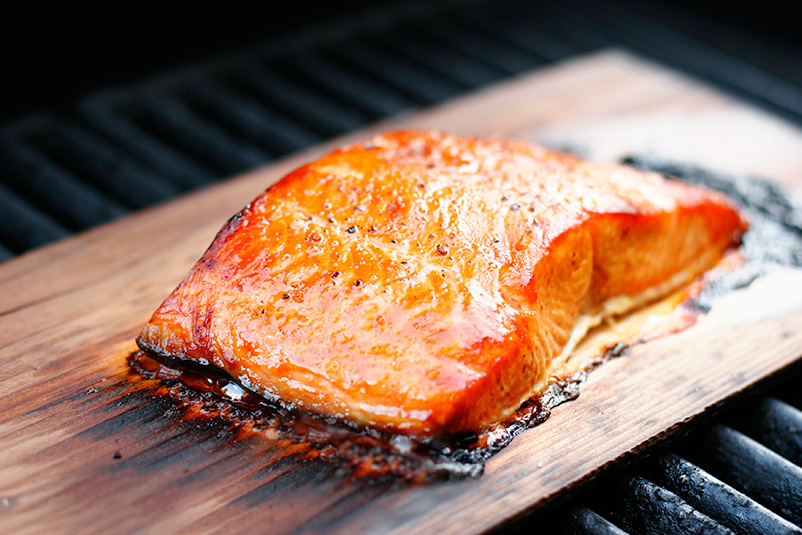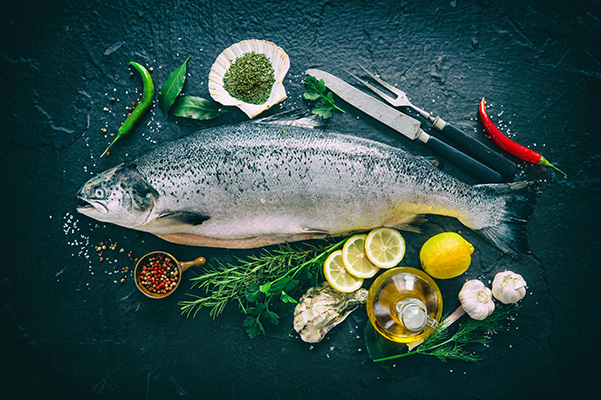
EVERY PLACE IN THE WORLD HAS ITS OWN CULINARY SPECIALTY.
They're often related to the foods that grow there naturally (such as cod fish in Newfoundland) or brought throughout history (such as potatoes in Ireland). Many cultures developed exquisite foods through necessity (such as delicious organ meat dishes in France) or seemingly by pure luck (beers and wines everywhere.)
So it's a traveller's treat to experience the foods traditionally made and eaten there. You can learn a deeper appreciation for the local culture if you're willing to eat outside of your comfort zone. It's one of the great reasons to travel and can free you from prejudices you didn't even know you had!
Modern Alaskan Food Specialties
SO WHAT DO MODERN ALASKAN EAT? Everything, of course. In this age of easy transportation urban Alaskans enjoy the same selection of goods that you know from your own supermarket. But they also have access to fresh specialties that are uniquely Alaska!
Here at Alaska Wild Berry Products, our favorites are the amazing wild berries. Some of our berries might be familiar to you – like our wild blueberries (smaller and sweeter than the blueberries you can buy) and wild cranberries (which we call high bush cranberries). We also enjoy salmonberries which look like raspberries but are yellow or orange and have a completely different flavor. Don't miss the delicious mossberries (also called crowberries,) lingonberries (also called low bush cranberries,) and watermelon berries.
All of these are used for homemade berry jams and berry jellies. And of course we also use them here to make our famous Wild Berry Jelly Center Chocolates. To learn more about Alaskan berries, see the Berries We Use.
Alaska's cold water seafood is the centerpiece of Alaskan cuisine. Alaskan salmon is one of the most important foods here and is often served as smoked salmon, cured salmon, salmon jerky, and even sweetened indian salmon candy. The Alaskan salmon and halibut fishing industry brings tourists from all over the world, but it's probably the Alaskan King Crab that most people think of first. Unlike the smaller dungeness or blue crabs found in the lower 48 states, a single Alaskan King Crab can easily feed a whole hungry family.
Alaska hunters enjoy bagging large game animals such as moose, caribou, elk, or bear. You might not be familiar with those meats but they form the basis of many people's daily protein, especially for people who live outside of the main cities.
And of course there are the famous reindeer. Many people know reindeer have been an important food source in Alaska but did you know they are not native? Reindeer were brought to Alaska from Siberia starting in 1892. The idea was to provide a new food industry for Native Alaskans whose whaling grounds were running dry. Reindeer is no longer a major source of meat but can still be enjoyed in the form of commercially available sausage.
Sourdough bread is so popular that the word "sourdough" is slang for a person who lives in Alaska! This started during the Klondike Gold Rush when everyone kept a pot of sourdough starter in their kitchens. By "feeding" the starter with a little new flour every few days they kept the wild yeast alive and thriving so they could bake bread whenever they wanted. It's said people would even bring the pot to bed on cold nights to keep it from freezing!

Traditional Foods from Rural Alaska and Yesteryear
THE NATIVES OF ALASKA, commonly known as Eskimos but more properly called Central Yupik (in the Bering Sea area) and Inupiat (in the north Arctic), ate very differently from people in warmer climates. Seal meat and oil was important, as were whales, walrus, fish, and birds. Since the climate is so cold, it was important to eat plenty of fats and oils to help keep warm. Seal and whale blubber might not sound appetizing but they can be real life savers when it's 40 degrees below zero!
As you might imagine, there were not very many plant foods available. Some that were or still are important are negaasget, uutngungsaat, iitat, marallat, and mouse food which are different roots cooked in soup. All sorts of berries are also gathered, as are the soft inner bark of the birch tree, and ayuq which is a plant which can be made into a kind of tea.
Fermentation was sometimes used as a preservation technique. Stinkhead and stinkeggs are preserved salmon heads and roe wrapped in grasses and buried for several weeks, similar to Swedish Surströmming, a stinky, fermented Baltic herring.** The results are very unpleasant for non-natives to eat but is an important source of nutrition when food is scarce and is considered a treat in the villages.
Akutaq (also known as Eskimo Ice Cream) is a fancy name for a hearty dish you probably haven't heard of. Natives used to make this unusual dish by whipping the fat of hunted reindeer, seals, or bears, then adding snow and wild native berries. Sugar wasn't available but it would probably be a nice addition. Nowadays it is made with crisco and is mixed with berries, mouse food, dried meat, and other vegetables depending on what is available.
* Many thanks to Marty Baston and his children who helped us learn about these foods.
** And thanks to our friend Regina from Sweden for teaching us about Surströmming!
